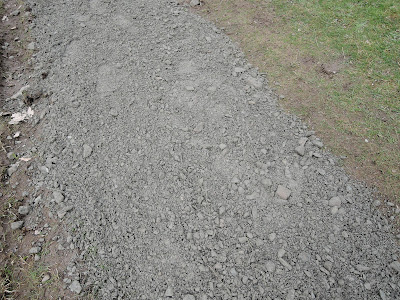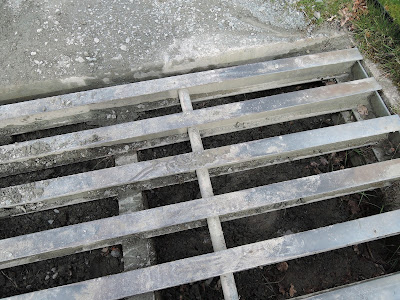Alarming increases in the numbers of Himalayan Balsam seedlings are taking root at Millerground, on the east side of Windermere, this April. (See image below).
Winter flood water has dispersed seeds from upstream over a much larger area than usual and in much greater concentrations than seen in previous years.
Himalayan Balsam is highly Invasive and will take over large areas if not controlled.
Millerground is an important site for the rare native Touch-Me-Not Balsam which, sadly, is easily out competed and ousted by alien plant species especially Himalayan Balsam.
This is an image of a Himalayan Balsam seedling. The heart shaped leaves running from top left to bottom right of the image are the cotyledon leaves which are present in the seed prior to germination. The first true leaves formed after germination are to be seen diagonally from top right to bottom left.
Incredibily, there are over three hundred seedlings in this large handful pulled up from just a small patch of ground at Millerground. Each seedling has the potential to grow to over three metres in height and produce up to eight hundred seeds by late Summer.....
....to form dense stands like this one in following seasons. This stand was photographed in July on privately owned land above Millerground and on the same water course, Wynlass Beck, that flows through Millerground.
Here is another stand by the side of Wynlass Beck slightly further upstream growing alongside yet another horribly invasive plant, Japanese Knotweed.
The two invasive species appear to have formed an unholy alliance! Their growth rate is so prolific they have formed a virtual canopy over the stream here, all but eliminating any native plants on both sides of Wynlass Beck in this area and beyond.
Without due diligence, by the rangers, in combating invasive plants on Trust land...Millerground potentially could and probably...would...look very similar!
Pollinators, mainly bumblebees, find Himalayan Balsam utterly irresistible as it produces vast quantities of nectar with a high sugar content over an extended flowering period; (like putting a child in a sweet shop with no restraints!)
Pollinators often ignore native plants, considerably reducing their seed set, in favour of this alien invader! This assists in the spread of Himalayan Balsam which adversely alters the ecological balance and nature of riparian and wetland habitats.
Eradicating or at least reducing the numbers of Himalayan Balsam will 'encourage' pollinators to actively seek out native plants. This should increase their numbers allowing them to make a comeback in areas previously dominated by Himalayan Balsam, improving biodiversity...particularly in wetland areas and alongside river banks.
Touch-Me-Not Balsam stand at Millerground last Summer; intensive eradication of Himalayan Balsam in this area has allowed the native balsam to flourish here.
A close up of a Touch-Me-Not flower.
Even more extensive eradication work will be needed at Millerground this season to prevent....
...this...
...causing this...
...and this to occur year after year.
































